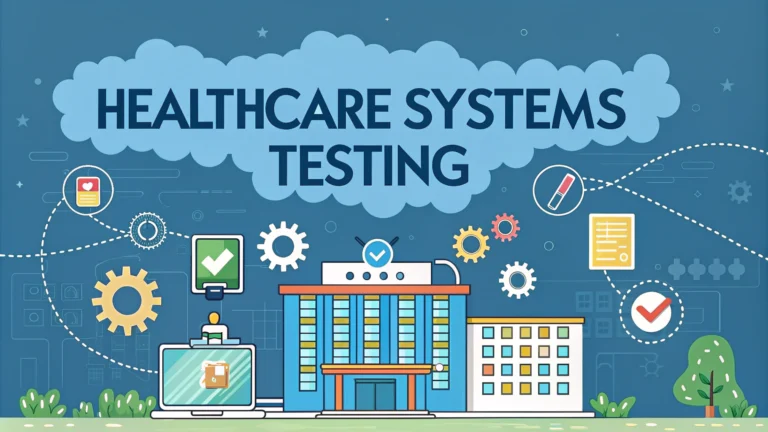Healthcare systems testing evaluates security measures protecting electronic health records, medical devices, and patient data infrastructures.
Security breaches in healthcare can directly impact patient safety, privacy, and the delivery of critical care services.
This guide covers essential penetration testing approaches for healthcare organizations to identify and address vulnerabilities before malicious actors can exploit them.
Key Areas of Healthcare Penetration Testing
- Electronic Health Record (EHR) Systems
- Medical Device Networks
- Remote Patient Monitoring Systems
- Administrative Systems
- Third-party Vendor Connections
Required Compliance Standards
- HIPAA Security Rule
- HITECH Act Requirements
- FDA Medical Device Security Guidelines
- PCI DSS (for payment systems)
Testing Methodology
Start with a thorough asset inventory including all connected medical devices, networks, and systems.
Implement testing protocols that won’t disrupt patient care or critical medical services.
Use specialized medical device testing tools approved by manufacturers.
Common Vulnerabilities in Healthcare Systems
- Outdated operating systems on medical devices
- Weak authentication mechanisms
- Unencrypted data transmission
- Default passwords on equipment
- Unsecured IoT medical devices
Testing Schedule Guidelines
| System Type | Testing Frequency |
|---|---|
| EHR Systems | Quarterly |
| Medical Devices | Bi-annually |
| Network Infrastructure | Monthly |
Best Practices for Testing
- Coordinate with IT and medical staff before testing
- Maintain detailed documentation of all tests
- Use both automated and manual testing methods
- Test during low-traffic periods
- Have emergency rollback procedures ready
Testing Tools and Resources
- Nessus Professional (for medical device scanning)
- Acunetix (web application testing)
- Wireshark (network analysis)
- Metasploit (with healthcare-specific modules)
Response and Remediation
Document all findings in a detailed report with severity ratings and remediation timelines.
Prioritize fixes based on patient safety impact and data security risks.
Implement changes through a controlled change management process.
Getting Professional Help
Contact these organizations for certified healthcare security testing services:
- HITRUST Alliance: https://hitrustalliance.net
- Healthcare Information and Management Systems Society (HIMSS): https://www.himss.org
Moving Forward with Security
Regular testing combined with continuous monitoring forms the foundation of a robust healthcare security program.
Keep testing procedures updated to match evolving threats and new healthcare technologies.
Build a security-aware culture among healthcare staff through regular training and updates.
Risk Assessment Planning
Develop comprehensive risk assessment strategies that account for both technical and operational risks in healthcare environments.
- Patient data flow analysis
- Critical system dependencies
- Impact assessment matrices
- Threat modeling scenarios
Testing Documentation Requirements
Pre-Testing Phase
- System inventory documentation
- Network architecture diagrams
- Data flow mappings
- Access control matrices
During Testing
- Real-time logging procedures
- Incident tracking methods
- Communication protocols
- Emergency response procedures
Advanced Testing Scenarios
Implement specialized testing procedures for complex healthcare environments:
- Multi-facility network testing
- Telemedicine platform security
- AI/ML system vulnerabilities
- Cloud-based healthcare services
Securing Tomorrow’s Healthcare
Maintain vigilance through continuous security evolution and adaptation to emerging healthcare technologies.
Foster collaboration between security teams, healthcare providers, and technology vendors to create robust defense strategies.
Implement proactive security measures that anticipate future healthcare delivery models and associated risks.
FAQs
- What is healthcare systems penetration testing?
Healthcare systems penetration testing is a controlled cybersecurity assessment that identifies and exploits vulnerabilities in healthcare IT infrastructure, including electronic health records (EHR), medical devices, networks, and applications to ensure HIPAA compliance and patient data protection. - Why is penetration testing crucial for healthcare organizations?
Penetration testing is essential because healthcare organizations must protect sensitive patient data (PHI), maintain HIPAA compliance, prevent ransomware attacks, ensure medical device security, and maintain continuous operation of critical care systems. - What are the main areas tested during healthcare penetration testing?
The main testing areas include network infrastructure, medical IoT devices, web applications, mobile health apps, EHR systems, physical security controls, wireless networks, and third-party vendor integrations. - How often should healthcare organizations conduct penetration testing?
Healthcare organizations should conduct comprehensive penetration testing at least annually, with additional testing after significant system changes, infrastructure updates, or new application deployments to maintain HIPAA compliance. - What compliance standards are addressed through healthcare penetration testing?
Healthcare penetration testing addresses HIPAA Security Rule, HITECH Act requirements, PCI DSS (for payment systems), NIST frameworks, and state-specific healthcare data protection regulations. - What are common vulnerabilities found in healthcare systems?
Common vulnerabilities include outdated software/firmware, weak authentication mechanisms, unencrypted data transmission, misconfigured medical devices, insecure API implementations, and inadequate network segmentation. - What is the difference between automated and manual penetration testing in healthcare?
Automated testing uses specialized tools to identify known vulnerabilities quickly, while manual testing involves skilled professionals who can identify complex vulnerabilities, test business logic, and evaluate security controls specific to healthcare environments. - How should healthcare organizations prepare for penetration testing?
Organizations should inventory all systems and devices, identify critical assets, establish testing boundaries, prepare backup systems, notify relevant stakeholders, and ensure testing won’t impact patient care operations. - What should be included in a healthcare penetration testing report?
The report should include an executive summary, detailed findings, risk ratings, technical vulnerabilities, potential impact on patient care, remediation recommendations, and compliance implications. - What are the risks of not performing regular penetration testing?
Risks include data breaches, HIPAA violations and fines, compromise of medical devices, disruption of patient care, reputation damage, and potential legal liability from exposed patient information.







